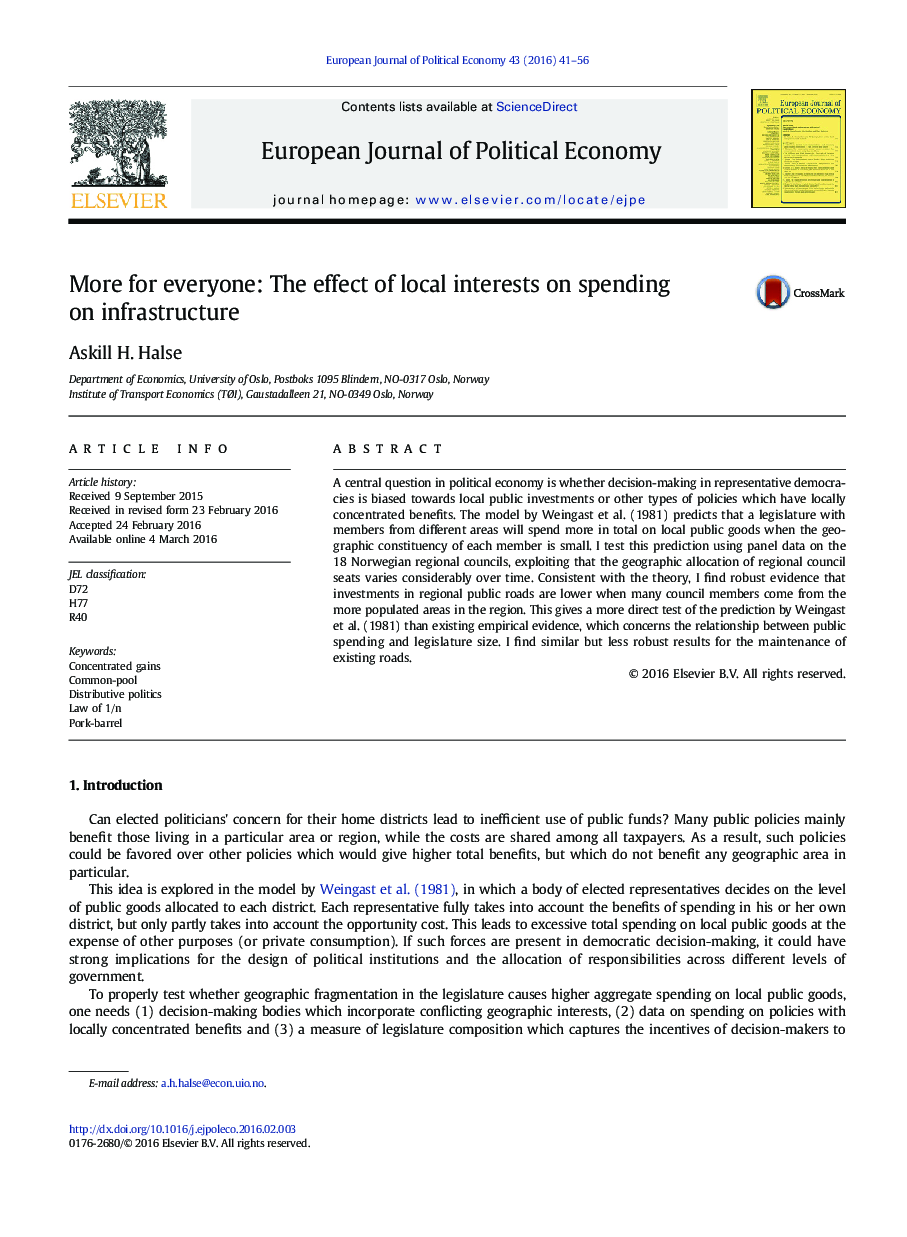| Article ID | Journal | Published Year | Pages | File Type |
|---|---|---|---|---|
| 5067855 | European Journal of Political Economy | 2016 | 16 Pages |
â¢I investigate whether politicians which represent narrow geographic interests spend more on local public goods.â¢I use panel data on representation and policies in the Norwegian regional governments.â¢I find that investments in roads are lower when politicians represent large populations.â¢I argue that my empirical application is closer to the theoretical literature than studies on the effects of legislature size.
A central question in political economy is whether decision-making in representative democracies is biased towards local public investments or other types of policies which have locally concentrated benefits. The model by Weingast et al. (1981) predicts that a legislature with members from different areas will spend more in total on local public goods when the geographic constituency of each member is small. I test this prediction using panel data on the 18 Norwegian regional councils, exploiting that the geographic allocation of regional council seats varies considerably over time. Consistent with the theory, I find robust evidence that investments in regional public roads are lower when many council members come from the more populated areas in the region. This gives a more direct test of the prediction by Weingast et al. (1981) than existing empirical evidence, which concerns the relationship between public spending and legislature size. I find similar but less robust results for the maintenance of existing roads.
